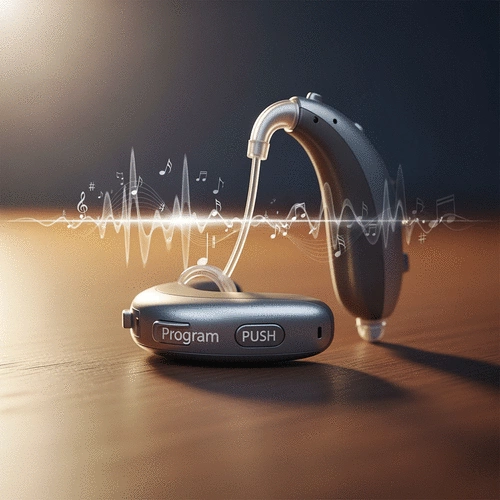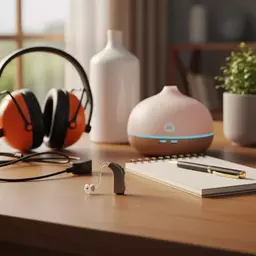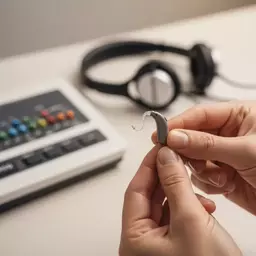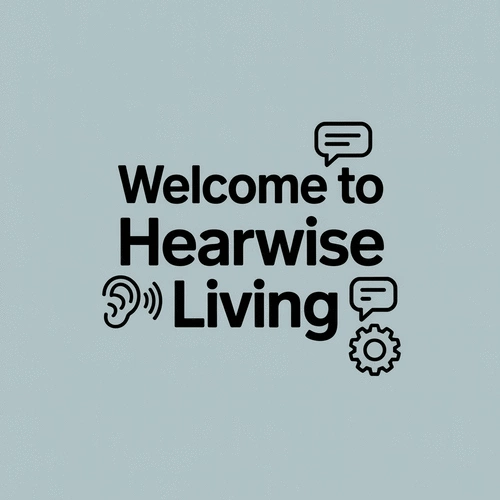How well do you really understand the technology that can transform your listening experience? Many people are unaware of the various types of hearing aids available and their unique features. This knowledge is essential for anyone looking to improve their hearing health and connect better with their loved ones.
What You Will Learn
- Different types of hearing aids, including BTE, ITE, RIC, and CIC, and their suitability for various hearing losses.
- The benefits of rechargeable hearing aids and considerations for choosing between rechargeable and battery-operated models.
- How noise reduction technology can enhance your listening experience by filtering out background noise.
- The importance of Bluetooth connectivity in modern hearing aids for streaming audio and adjusting settings via apps.
- Why customizable settings are crucial for addressing individual hearing needs and environments.
- Key features like feedback suppression and volume control that improve sound quality in hearing aids.
- Factors to consider when selecting hearing aids, including features, price, and the level of professional support.
Hearing Aid Types and Key Features
This visual compares the main types of hearing aids and highlights their essential features to help in making an informed decision.
Behind-the-Ear (BTE) & In-the-Ear (ITE)
BTE models sit behind the ear, while ITE models fit directly into the outer ear.
- BTE: Great for all types of hearing loss, comfortable.
- ITE: Discreet, user-friendly, mild to moderate loss.
Receiver-in-Canal (RIC) & Completely-in-Canal (CIC)
RIC has the receiver in the canal, CIC sits deep inside the ear canal.
- RIC: Natural sound quality, less visible.
- CIC: Nearly invisible, ideal for discretion.
Rechargeable Hearing Aids
Offer convenience by eliminating the need for regular battery changes.
- Benefit: Simplify routine, ensure continuous power.
- Consideration: Charging options must fit lifestyle.
Essential Features
Key technologies for an enhanced listening experience.
- Noise Reduction: Filters background noise.
- Bluetooth: Connects to smartphones for streaming.
- Customizable Settings: Tailored sound for environments.
- Feedback Suppression: Minimizes whistling.
Understanding Hearing Aids: Types and Their Key Features
When it comes to enhancing your listening experience, understanding the different types of hearing aids available is essential. With various styles and features, it can feel overwhelming at first. But don’t worry! At HearWise Living, we’re dedicated to helping you navigate these choices, ensuring you find the perfect fit for your hearing journey.
Hearing aids come in many forms. They can be tailored to meet your unique hearing needs and lifestyle. Let’s break down the main types of hearing aids and explore their key features so you can make an informed decision.
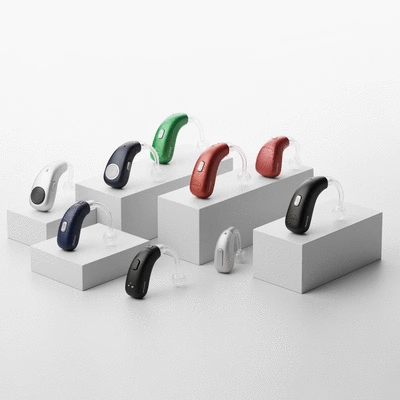
Exploring Various Hearing Aid Types
Behind-the-Ear (BTE) vs. In-the-Ear (ITE) Models
First, let’s discuss the popular Behind-the-Ear (BTE) and In-the-Ear (ITE) models. BTE hearing aids sit comfortably behind the ear, with a tube directing sound into a custom ear mold. This design makes them suitable for a wide range of hearing losses and offers excellent sound quality.
On the other hand, ITE models fit directly into the outer ear, providing a more discreet option. They’re often easier to handle and adjust. Both styles have their advantages, so consider what feels most comfortable and fits your lifestyle.
- BTE: Great for all types of hearing loss, comfortable and powerful.
- ITE: Discreet, user-friendly, suitable for mild to moderate hearing loss.
Receiver-in-Canal (RIC) and Completely-in-Canal (CIC) Styles
Next up are the Receiver-in-Canal (RIC) and Completely-in-Canal (CIC) styles. RIC models have the receiver positioned in the ear canal, connected via a thin wire to the main housing behind the ear. This design provides a natural sound quality and is less noticeable than BTEs.
CIC hearing aids, as the name suggests, sit deep inside the ear canal and are virtually invisible. They’re perfect for those who prefer discretion. However, their small size may limit some features compared to larger models.
- RIC: Natural sound, less visible, suitable for various hearing losses.
- CIC: Nearly invisible, ideal for mild to moderate hearing loss.
Rechargeable Hearing Aids: Benefits and Considerations
One of the more recent advancements in hearing technology is rechargeable hearing aids. These models offer the convenience of not having to change batteries regularly. Just place them in their charging station overnight, and you’re all set for the day! This feature can simplify your routine and ensure you never run out of battery power.
However, it’s important to consider your lifestyle. If you often find yourself in situations where charging isn’t an option, traditional battery-operated models might be more suitable. Think about your daily habits and how a rechargeable option might fit into them.
Essential Features to Consider When Choosing Hearing Aids
Noise Reduction Technology: How It Enhances Your Experience
Another crucial aspect to consider when selecting hearing aids is noise reduction technology. This feature helps filter out background noise, enabling you to focus on conversations without distractions. Imagine joining a lively gathering, and instead of being overwhelmed by chatter, you can hear your loved ones clearly!
Choosing hearing aids with effective noise reduction technology can greatly improve your listening experience and overall quality of life. Be sure to ask your audiologist about this feature during your consultation.
Bluetooth Connectivity: Staying Connected with Mobile Apps
Have you ever wished you could stream directly from your phone to your hearing aids? With Bluetooth connectivity, you can! This feature allows you to connect your hearing aids to your smartphone, making it easy to enjoy music, take calls, and even adjust settings through an app.
This added convenience can enhance your daily interactions and make it simpler to connect with the world around you. It's a modern touch that aligns with today’s tech-savvy lifestyle!
Customizable Settings for Individual Hearing Needs
Each person's hearing loss is unique, which is why having customizable settings is essential. Many hearing aids offer the ability to tailor sound settings based on specific environments or personal preferences. You may want a different setting for quiet spaces compared to busy restaurants!
Before making a decision, discuss your hearing needs with your audiologist. They can help you find a model that allows for personalized adjustments, ensuring you get the most out of your hearing aids.
Feedback Suppression and Volume Control: Enhancing Sound Quality
Lastly, don’t overlook the importance of feedback suppression and volume control. Feedback can be frustrating—resulting in whistling or echoes. Modern hearing aids come equipped with technology to minimize this issue, providing a cleaner sound experience.
Volume control is another vital feature, giving you the power to adjust sound levels based on your surroundings. You deserve to hear clearly in every situation, whether it’s a quiet conversation or a bustling gathering!
Pro Tip
When considering hearing aids, be sure to test them in different environments before making a final decision. This will help you understand how well they perform in various situations, such as quiet rooms, busy restaurants, or outdoor settings. A trial period can also reveal the effectiveness of features like noise reduction and Bluetooth connectivity in your daily life.
Frequently Asked Questions About Hearing Aids
- What are the main types of hearing aids?
- The main types are Behind-the-Ear (BTE), In-the-Ear (ITE), Receiver-in-Canal (RIC), and Completely-in-Canal (CIC). Each type offers different benefits regarding visibility, comfort, and suitability for various degrees of hearing loss.
- What are the benefits of rechargeable hearing aids?
- Rechargeable hearing aids offer convenience by eliminating the need for frequent battery changes. They simplify your routine and ensure continuous power with an overnight charge, reducing the hassle of disposable batteries.
- How does noise reduction technology improve listening?
- Noise reduction technology filters out unwanted background noise, allowing users to focus on conversations and desired sounds. This significantly enhances the listening experience, especially in noisy environments.
- What is the importance of Bluetooth connectivity in hearing aids?
- Bluetooth connectivity allows hearing aids to connect wirelessly to smartphones and other devices. This enables direct audio streaming for calls, music, and podcasts, and often allows users to adjust hearing aid settings via a mobile app, enhancing daily interactions.
- Why are customizable settings important for hearing aids?
- Customizable settings are crucial because each person's hearing loss and listening environments are unique. They allow users to tailor sound settings for different situations (e.g., quiet vs. noisy places), ensuring optimal performance and personalized comfort.
Making an Informed Decision: Key Takeaways
As you navigate your journey with hearing aids, it’s essential to gather all the necessary information to make an informed decision. There are several factors to weigh when choosing the right hearing aid for you. The combination of features, pricing, and support can significantly influence your experience and satisfaction. Let’s recap some important points to keep in mind!
Recap of Important Factors to Consider
When it comes to selecting your hearing aids, understanding how various elements play into your choice is vital. Here’s a quick overview:
- Features: Advanced technologies such as noise reduction, Bluetooth connectivity, and customizable settings can dramatically enhance your hearing experience.
- Price: It's crucial to evaluate the overall cost of the devices, including any additional features that may influence the price.
- Support: The level of professional support you receive from your audiologist and hearing care providers can greatly affect your success with the hearing aids.
By considering these factors, you can ensure that your choice aligns with your personal hearing needs and lifestyle. Understanding the balance between these elements will lead you towards the best hearing solution for your circumstances.

The Impact of Features, Price, and Support on Your Choice
Each aspect—features, price, and support—plays a role in your overall satisfaction. For instance, while a higher-priced hearing aid may offer better technology, it’s essential to balance that with the level of support you can expect. Will your audiologist be available for adjustments and ongoing consultations? Always remember that the most expensive option isn’t necessarily the best for your unique situation.
The Importance of Personal Needs in Selecting Hearing Aids
Your individual lifestyle and hearing profile should guide your decision-making process. Think about the environments where you spend most of your time: Are they noisy, quiet, or a mix of both? These factors will help you determine which features are non-negotiable for your hearing aids. Taking the time to assess your personal needs will pay off in finding the right fit!
Consumer Reports on Hearing Aids: Evaluating Real User Feedback
It’s always a good idea to look at consumer reports and user reviews. Hearing aids can vary greatly in performance based on user experiences. Real-world feedback can provide valuable insights into how well a product works over time and in different situations. When researching, check for reviews that mention common challenges or praises to help guide your decision.
Next Steps in Your Hearing Aid Journey
Now that you have a clearer understanding of what to look for in hearing aids, it’s time to take action! Preparing for your consultation can be an exciting step forward in improving your hearing health.
How to Prepare for Your Consultation with an Audiologist
Before visiting your audiologist, it’s beneficial to gather some information:
- Make a list of your specific hearing concerns and questions.
- Consider your daily activities and environments where you experience hearing challenges.
- Be prepared to discuss your medical history, including any medications you’re taking that may affect your hearing.
Being well-prepared will help you make the most of your consultation, ensuring that you receive tailored advice for your hearing needs. Remember, this is a collaborative process, and your insights are invaluable!
Resources for Further Information on Hearing Aids and Support
At HearWise Living, we’re committed to empowering you with knowledge. Our website is filled with resources, informative articles, and expert audiology insights to help you stay informed about the latest in hearing technology and wellness strategies. I encourage you to explore our content and feel free to reach out with any questions or for support as you navigate this journey!
Recap of Key Points
Here is a quick recap of the important points discussed in the article:
- Types of Hearing Aids: Understand the differences between BTE, ITE, RIC, and CIC models to choose the best fit for your lifestyle and hearing needs.
- Rechargeable Options: Consider the convenience of rechargeable hearing aids versus traditional battery-operated models based on your daily habits.
- Essential Features: Look for features like noise reduction technology, Bluetooth connectivity, customizable settings, feedback suppression, and volume control to enhance your listening experience.
- Evaluate Support: The level of professional support from your audiologist can significantly impact your satisfaction and success with hearing aids.
- Personal Needs Matter: Assess your unique hearing environments to determine which features are most important for your daily activities.

